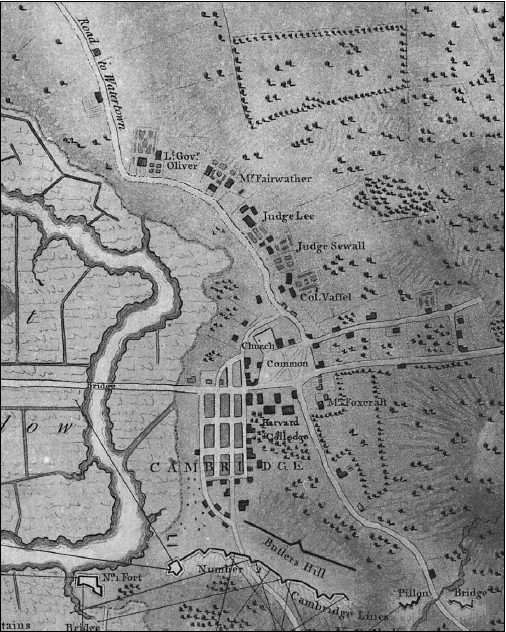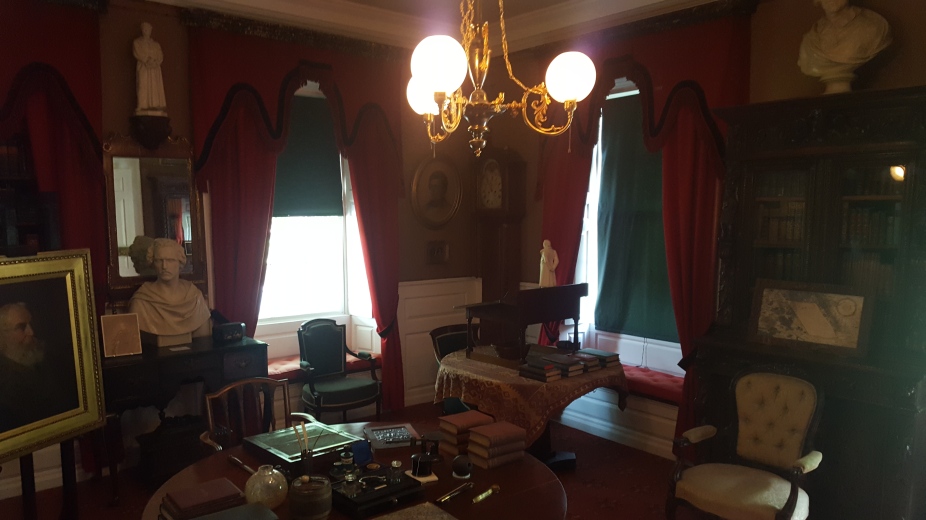In July 1775, George Washington chose a house on Watertown Road near the Charles River as his headquarters in Cambridge, Massachusetts. It was a stately manor owned by loyalist John Vassall. John and Elizabeth Vassall, and their six children ages 12 – infancy, left their Cambridge estate in September 1774 to seek the protection of British soldiers stationed in Boston. John Vassall’s Cambridge estate of nearly 90 acres was the largest and most elegant in the area. Vassall’s wealth was inherited and came primarily from farms in Jamaica where slaves tended vast plantations. The Vassalls also owned slaves that worked in the home and gardens at their Cambridge estate. At first glance, Washington and Vassall don’t seem all that different. Both were plantation and slave owners. Both had inherited substantial sums of money, Washington’s wealth coming from his marriage to Martha. Perhaps these similarities are what drew Washington to pick this recently abandoned estate as his military headquarters.


Map of Cambridge showing Col. Vassall’s home along Watertown road
Despite their social similarities, the time had come in the colonies to pick sides. Washington chose the patriot cause. Vassall chose the King. John Vassall did not declare his loyalty to the Crown until 1774, when it became apparent that he could not remain neutral. He was a prominent member of the Anglican church, relied heavily on British trade to support his family’s wealth, and was well-connected in London. As most loyalists, Vassall was trying to preserve his way of life by siding with the British. As a prominent member of society, Vassall’s declaration to side with the Crown, put his family in danger. The danger primarily rose from the potential for patriot mobs to storm loyalist homes suspected of providing British General Gage with intelligence. Thus, as loyalists John and his family left their Cambridge estate in the hands of their slaves, and traveled into Boston where British soldiers controlled the city. It’s clear that John Vassall believed he would simply return to his Cambridge home after the British put down the tumultuous behavior of the patriots. How wrong he was. John Vassal never set foot in his Cambridge home again. In March 1775, he left with the British fleet as it fled Boston. He and his family went to England where he remained the rest of his life.

John Vassall’s Uncle William (seated) and Nephew Leonard Vassall
It’s hard to imagine George Washington being anything other than the leader of the American Revolution. However, had things gone just a little bit differently in Washington’s life he, like John Vassall, would have likely sided with the British. In his early military career many years prior to the Revolution, Washington’s great ambition was to become a commissioned British officer. Time and again Washington was rejected by the British Royal Government. This rejection fueled Washington’s resentment of the establishment that shunned those unconnected in British Royal circles. We will never know what might have been, but most commissioned British officers stood by their King in the Revolution. Fortunately, Washington sided with the rebels and transformed the loyalist Vassall home into his headquarters.
Washington’s arrival at the Vassall house would have brought a whirlwind of activity. Many of the Revolution’s key figures would have stepped through the door to the beautiful home on Watertown road: Nathaniel Greene, Charles Lee, Horatio Gates, Benedict Arnold, Israel Putnam, Artemas Ward, Henry Knox, John Adams, and Benjamin Franklin to name a few. Washington’s “makeover” of the Vassall home turned a quiet English gentleman’s estate into the brain center of the rebellion.

The front stairs in Washington’s headquarters. Many of the Revolution’s finest would have stood here.

The room used by Washington as his office. The decor is from Longfellow’s era in the mid-1800’s
Washington’s headquarters has been preserved and now stands as part of the National Park Service. We visited this spring while on my book tour for The Drum of Destiny. Washington’s headquarters later became the home of poet Henry Wadsworth Longfellow in the mid-1800’s. Most of the furnishings and decor currently in the home are part of the Longfellow Trust. Longfellow knew the home’s history and loved the fact that so many key revolutionary characters had been inside his home. To stand inside looking into the room where Washington kept his office is like stepping back in time. What Washington accomplished in this home, taking it from loyalist estate to patriot headquarters is truly amazing.
For more about the Vassalls and Washington’s early days as the commanding general you can read the Historic Resource Study by J.L. Bell published by the National Park Service.
